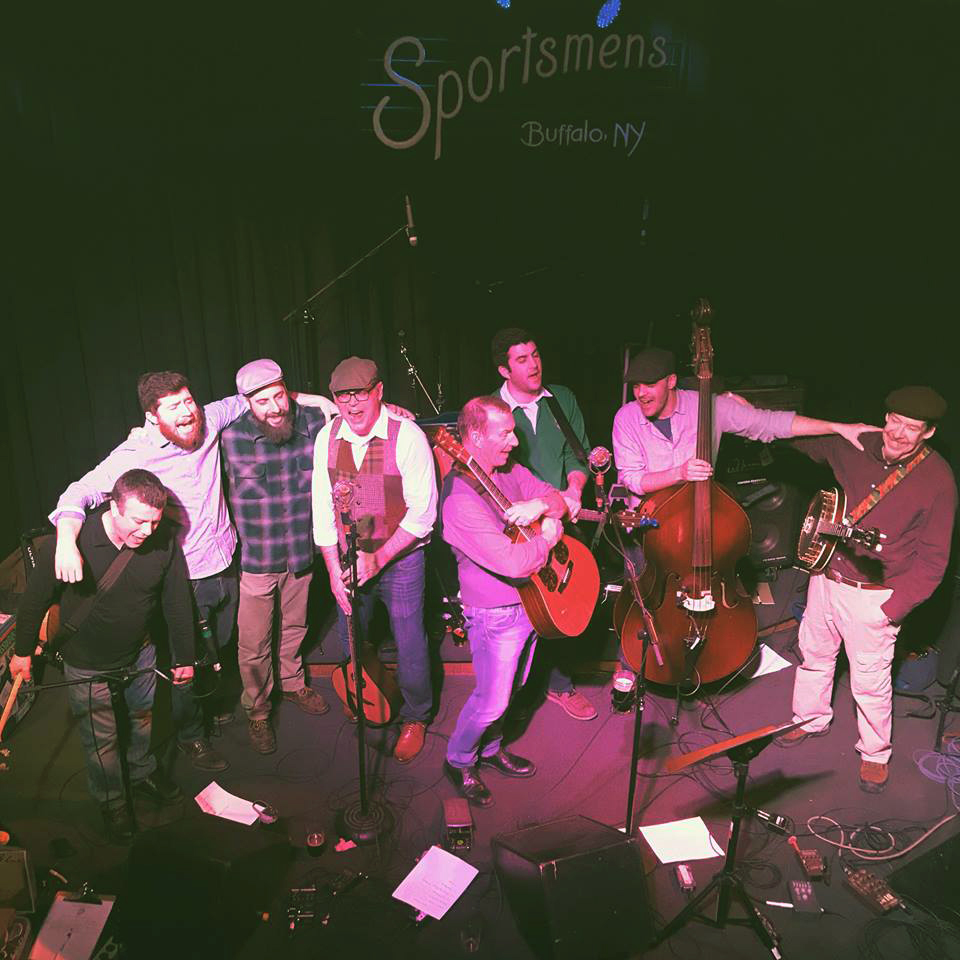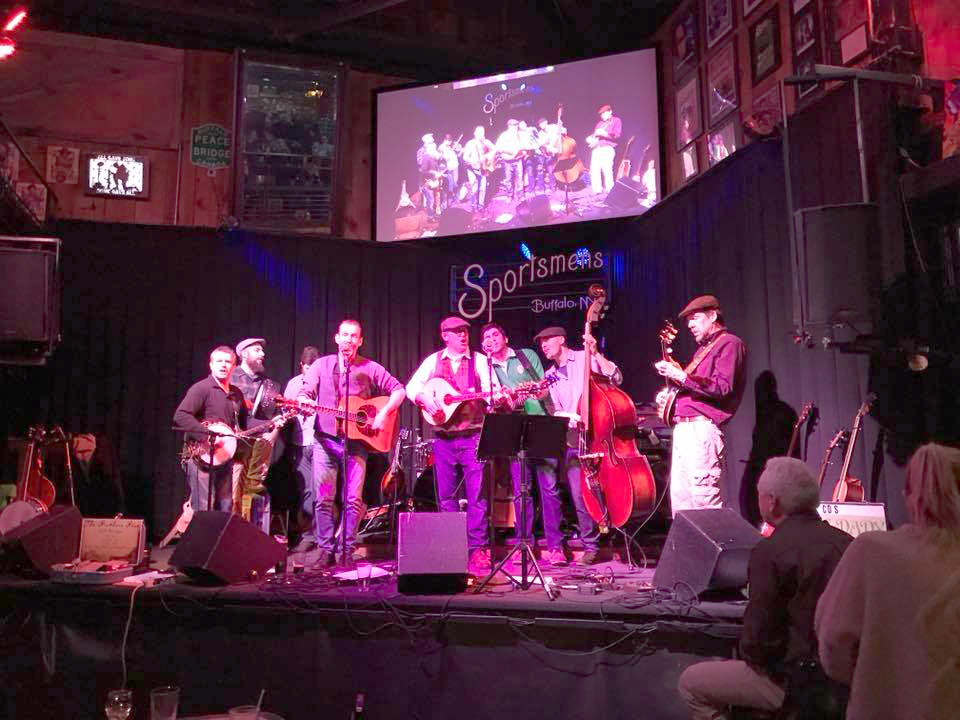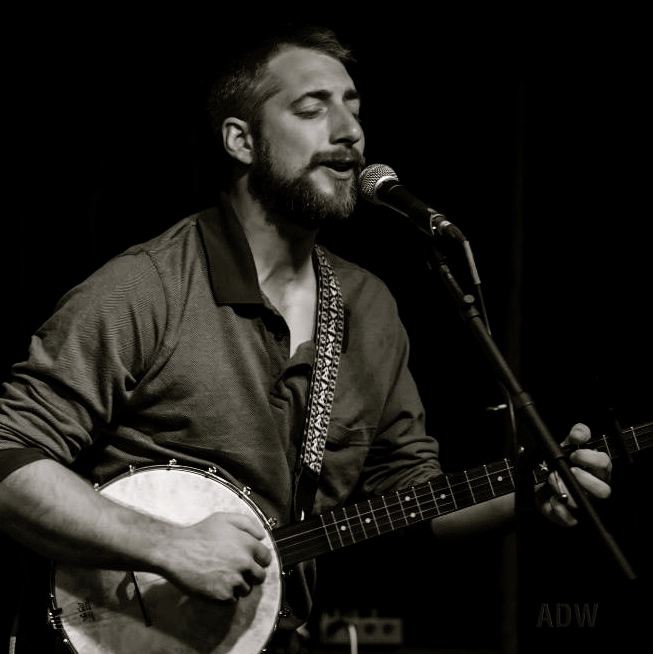Finger Lakes Sound: Reaching back
by Ben Haravitch –
“Tis the song, the sigh of the weary
Hard times, hard times, come again no more.
Many days you have lingered around my cabin door
Oh hard times, come again no more.”
– ‘Hard Times Come Again No More’
by Stephen Foster

Last weekend I found myself on a crowded stage at The Sportsmens Tavern in Buffalo along with my bandmates in The Brothers Blue, The Dady Brothers, and Crikwater. We chanted the chorus of ‘Hard Times’ together with a sold-out crowd marking the grand finale of a spirited evening. The event, dubbed ‘Cross the Pond’, was a celebration of Irish and Appalachian traditional music and the common roots we all share. As the hall echoed with singing from stage to balcony, I looked out and thought how natural it felt for a roomful of strangers to join together in song. Breathing and sitting were replaced by singing and swaying. I won’t discount the effect the twice-tapped Guinness keg had, but witnessing such enthusiasm after a four-hour affair I was reminded that music is not something we choose, it’s something we need. It lives deep within us and when we join together in celebration, mourning, love, or confusion, it finds its way out.
Music has probably been part of human life since the onset of our species Homo sapiens, and perhaps long before. It’s hard to miss the similarities that musical activities like group singing and call-and-response patterns share with the chorus of bird calls you hear on a spring morning. Nevertheless, it appears that we humans are the only mammals that intentionally create music. Where did this come from? Was it evolutionarily advantageous for our ancestors to be musical?
 One theory is that early humans attempted to mimic the sounds of their natural environments – the melody of a cascading brook, the rhythm of the waves, the dynamics of a thunderstorm. Many folks claim that they ‘don’t have a musical bone in their body.’ Yet chances are your ancestors preferred the entertainment of skin drums and bone flutes around a campfire over Hulu or Netflix.
One theory is that early humans attempted to mimic the sounds of their natural environments – the melody of a cascading brook, the rhythm of the waves, the dynamics of a thunderstorm. Many folks claim that they ‘don’t have a musical bone in their body.’ Yet chances are your ancestors preferred the entertainment of skin drums and bone flutes around a campfire over Hulu or Netflix.
Another guess at the gateway towards music in early humans is ‘Motherese’ (aka Baby Talk). Mothers and babies across the globe communicate with similar cadence, pitches, and rhythmic rocking. All of which help to strengthen the bond between mother and child while imparting the basic patterns of speech. This would probably lead to a greater chance of survival for the child who would then pass these music-making tendencies to their kin, and so on.
It’s not hard to see how music could be so deeply engrained in our human behavior. Notice how intertwined our perceptions of ourselves are with the concept of rhythm. First of all, a human fetus can hear sound for 20 weeks before it’s born. That’s 20 weeks of a constantly playing soundtrack of mother’s heartbeat. Steady. Responsive. Rhythm is in all of us. We even analyze our own moods with rhythmic phrases – are you ‘upbeat’ or ‘out-of-sync’? We monitor ourselves through our daily, weekly, monthly, and yearly rhythms; so in tune with our natural frequencies we don’t even notice it.
I can attest to the immediate effect rhythm has on health. When playing with a band that’s really swinging, locked in a groove together, I forget about the pain in my knee, nasal congestion disappears, and my back and neck feel loose. Conversely, when a band is not swinging and I’m fighting against a groove, I can become physically nauseated or achey. It’s as if we all have a sense of inner balance and harmony. When we recognize the phenomenon of harmonic equilibrium we can’t help but create rhythm with an instrument, by dancing, tapping a toe, or just ‘diggin’ the groove. It feels good and often doesn’t happen by choice. It overtakes us.
Since our beginnings as spiritual drummers and chanters tens of thousands of years ago, we have incorporated music into every aspect of our lives: weddings, funerals, bars, restaurants, fundraisers, tv shows, Christmas shopping, exercising… some modern folks have headphones on almost all the time. It’s impossible to notice the constant impact music has on our bodies and minds (if you’ve ever cried at the end of a movie, chances are it was due to the music not the dialogue). In addition to healing individuals through rhythm and harmony, we also see music heal entire societies and generations – establishing bonds between anyone who lived at a certain time. Some songs span generations and help tighten the ties that hold families and communities together.
Given the local population of those descended from Irish immigrants, we are lucky to have many spirited opportunities to partake in true folk music traditions this time of year. This St. Paddy’s season join the chorus and sing a song with an entire rowdy bar, feel the fiddles move your feet. Tap into an art form that has lasted generations. Explore your own family’s musical traditions. And, if you can reach back far enough, notice the roots of rhythm and harmony that we all share deep within ourselves. Let out the collective weary sigh.
 Ben currently lives in Warsaw, NY.
Ben currently lives in Warsaw, NY.
He teaches banjo, records music made by his friends, and performs with a variety of roots-based bands throughout the Finger Lakes region.